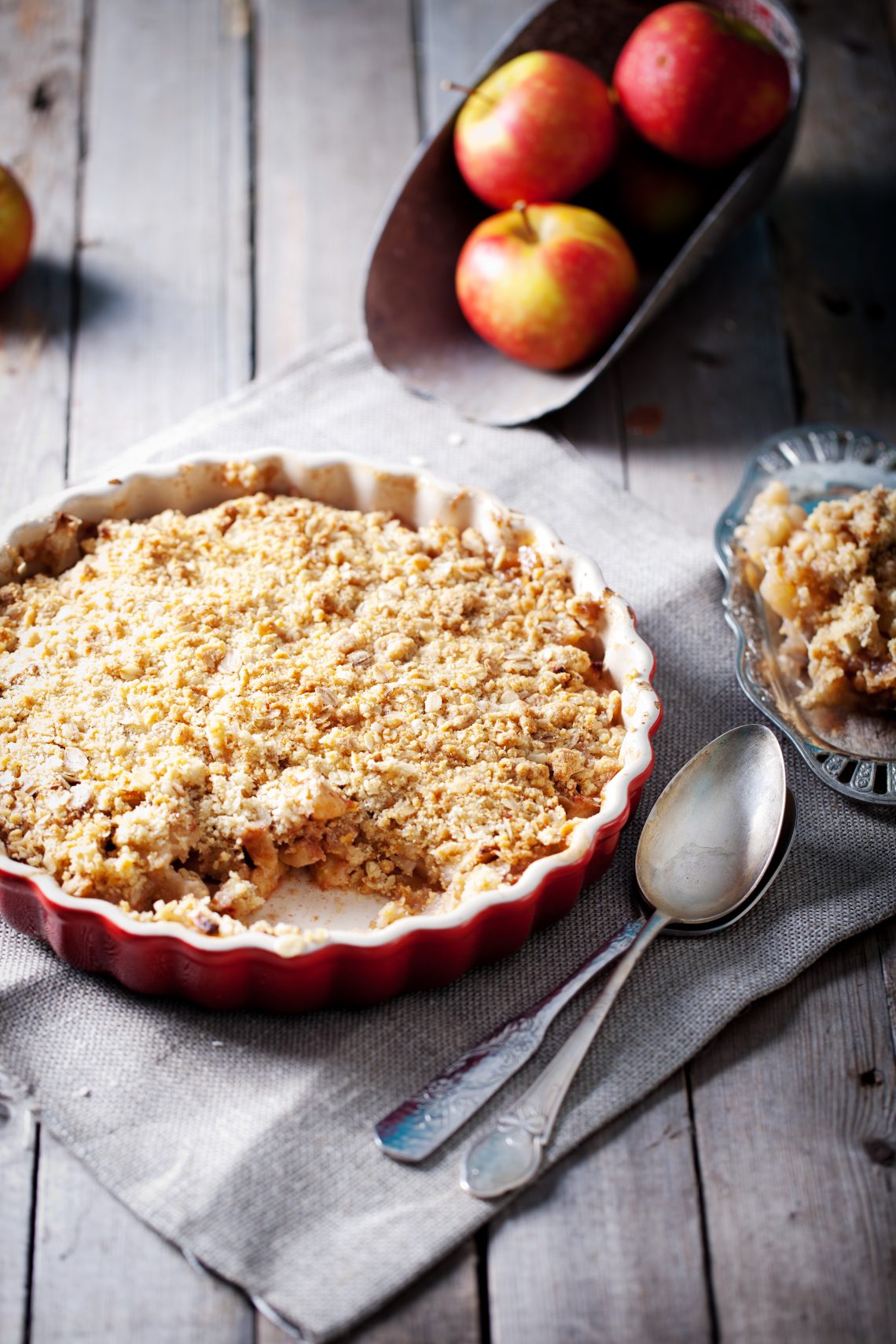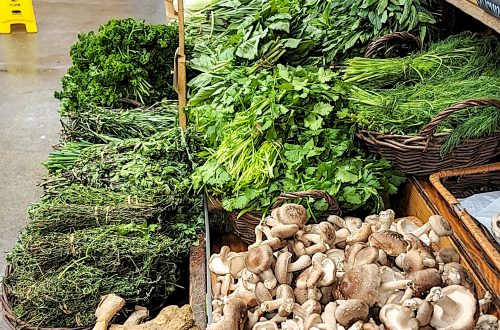
Can You Name That Apple Dessert?
This is the time of year when my mother and grandmother would get together to make apple pies that were put unbaked into the freezer for a future dessert. They were masters at pastry, and the apples were from my grandparents’ orchard. And, believe me, those pies were delicious. After all, this part of the Midwest where I grew up was pie country. The local community cookbook contains six pages of pie recipes and two other apple recipes – both for apple crisp.
When I moved to Boston in the 1960s, I learned about a whole new range of apple desserts. It seems that New England, probably due to its British origins and native bounty, has a whole tradition of baked fruit desserts that fall into the category occasionally called “spoon pies,” with some whimsical and quirky names: betties, buckles, cobblers, crisps, crumbles, grunts, pandowdies, and slumps. This is the kind of food that would be favored by the kind of folks I knew as a kid – unfussy and informal, a sweet finish to a meal that could be made quickly and was less finicky than a cake or a pie.
Crisps, crumbles, cobblers, and betties
Crisps, it turns out, were common across the United States. I may have eaten some of the others over the years of my youth, but the names didn’t stick with me. Part of the problems is the names themselves: even cooks can’t agree. The crisp/crumble definition is a good start. First off, there’s the crisp itself, a deep-dish pie crowned with streusel, rather than dough. The Oxford Companion to Sugar and Sweets points out that some cooks insist that the crisp topping include oats (in addition or in place of the flour) together with butter, sugar, spices, and sometimes chopped nuts. Crumbles call solely for flour. (Though you’d never know it by searching through recipes.) Other people, the book says, say it’s the other way around. To add to the confusion, crisp is more common in the U.S., while in Britain, the name crumble is used. What about the French? They have adopted “le crumble.”
Other defined desserts are clearer. A betty, or a brown betty, is made by mixing the apple slices with bread cubes or crumbs before baking. The cobbler, according to The Oxford Companion to Sugar and Sweets, is the one recipe from this group that is most varied. To most Americans, the cobbler is a deep-dish pie topped with baking-powder biscuit dough, which is often cut into pieces and dropped onto the fruit to achieve the appearance that it was “cobbled together.”
Buckles and slumps
This biscuit approach is found in some of the other recipes. The buckle, for example, closer to a coffee cake, consists of batter poured over or among the apples, often with the addition of a streusel so that the dessert, once baked, appears collapsed or “buckled.” The same approach can be found in slumps (also called grunts) in which the dessert is made on the stovetop rather than the oven. The somewhat softer dough is shaped into a dumpling and draped over the top of the apples. The entire dish is steamed in a covered pan, then sometimes finished in the oven to crisp the top. Richard Sax in Classic Home Desserts says that grunts are steamed while slumps are baked. Others contend that grunt is either the name of the dumpling on top or the satisfied sound you make when you eat one.
Sonkers and pandowdies
The state of North Carolina, especially in the Blue Ridge Mountains, is home to its own apple dessert variation called a sonker. It’s a soupy cake-style cobbler in which previously cooked fruit is baked with a flour-milk mix similar to pancake batter.
And finally, we get to the pandowdy, a biscuit-style variant in which the dough is often rolled out to form a covering over the fruit, then broken up during baking. In a process called by some “dowdying,” the dough mixture is then pushed down into the fruit, allowing the juices to bubble up, creating a crisp fruit-stained crust.
Here they are. Easier, faster, and definitely more fun to make than apple pie and enough to serve a crowd. What’s your favorite apple dessert?
To comment, please click on “Read in Browser” or on the headline to view the blog on the website. You can log in and comment at the end of the blog to share your thoughts and start a discussion.
If you’d like to share the blog, click on the Facebook icon or one of the others. Thanks!





One Comment
Steve Brayton
Origin of the name “pandowdy”?